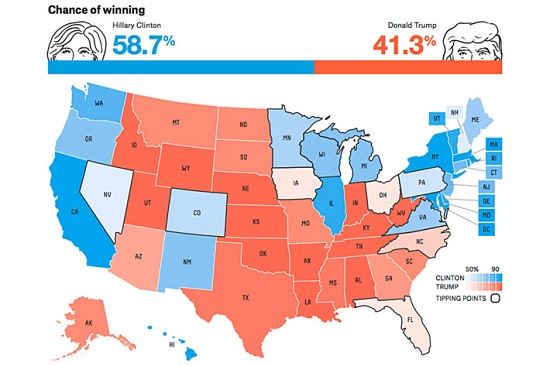There aren’t many, or any, surveys with more respondents than the polling accompanying U.S. presidential elections. And all such polls have error, both from simple randomness and from non-response bias. This year’s inaccuracy was not the first flagrant example. In 1948 newspapers trumpeted incorrectly that Dewey had beat Truman.
The 2016 election had an important source of randomness and confusion, namely the unpredictable behavior of Donald Trump. And one of the other sources of confusion was the difference between the Electoral College (whose results are the ones used to determine the winner) and the popular vote (which is interesting but not governing). It is still not clear as of November 14 (nearly a week after Election Day), but it appears that Hillary Clinton won the popular vote, and any polling that dealt mainly with the popular vote could easily draw the wrong conclusion.
Additional errors can arise from the inconsistency among the states regarding mail-in ballots or voting places open as early as September 19. The 46 million early voters (prior to election day) included a large number of unaffiliated (neither Democratic nor Republican) voters, making it hard to predict voter behavior on election day. (The total voter count was 130 million.) Beyond this, voter turnout apparently wasn’t predicted accurately
Traditional telephone polling also was a source of errors. Some people intending to vote for Trump were ashamed to admit it when they were surveyed with live interviews. Automated-dialer calls with recorded voice and Internet polling gave better results. But these calls cannot be used with cellphones.
Of all the analyses of the causes of the inaccuracy of the polls, we found the ones by Sean Trende on Rear Clear Politics the most helpful. Most perceptive was his finding that the polls were OK, but the conclusions by the pundits weren’t.

